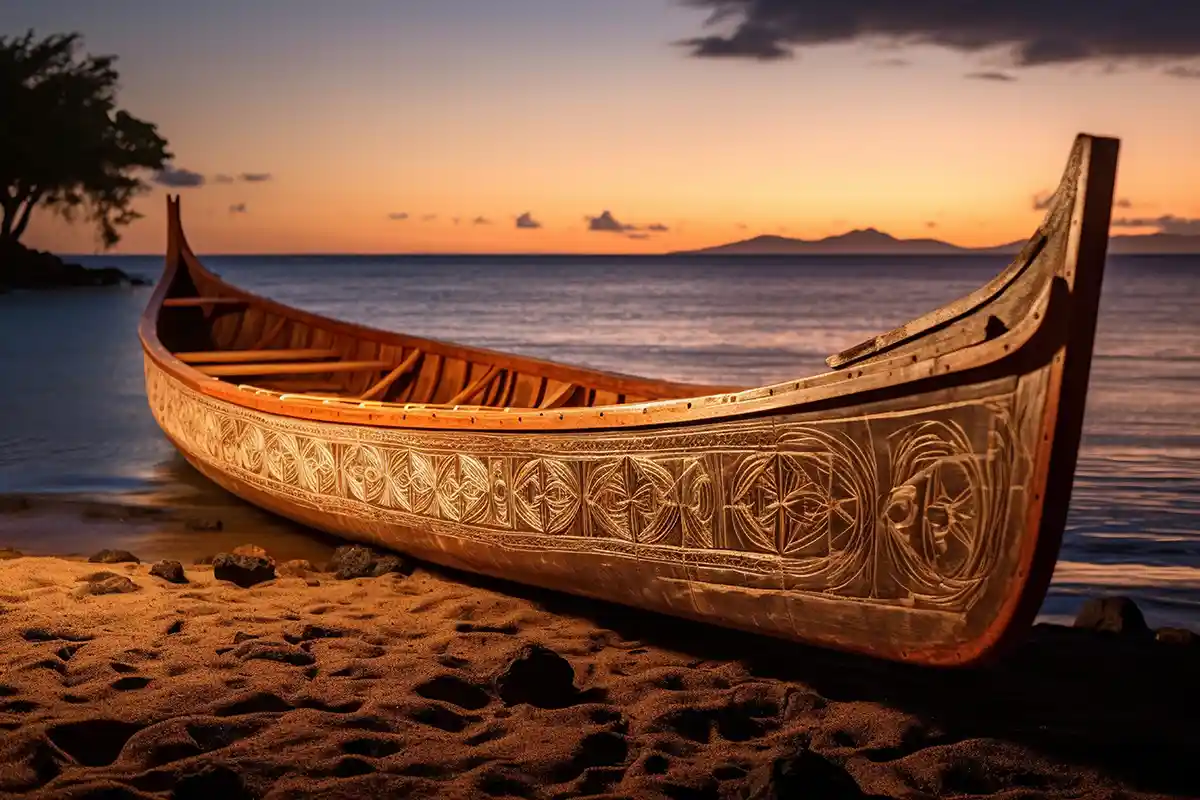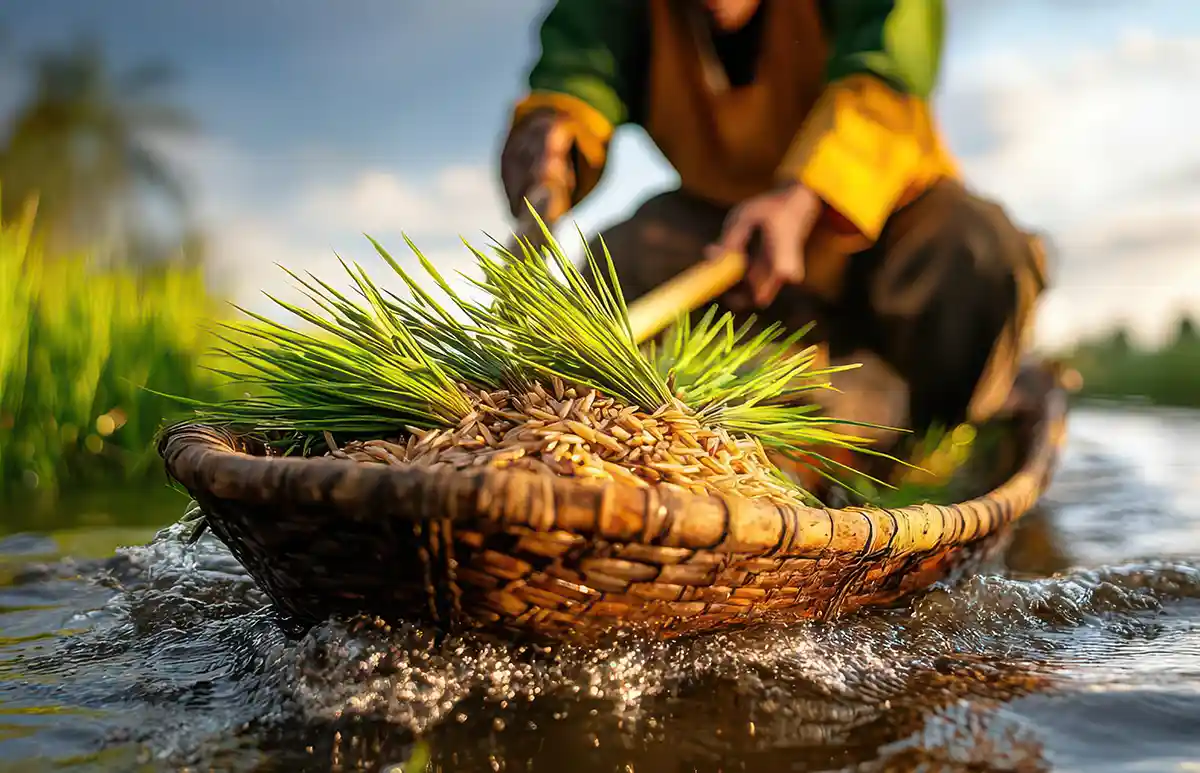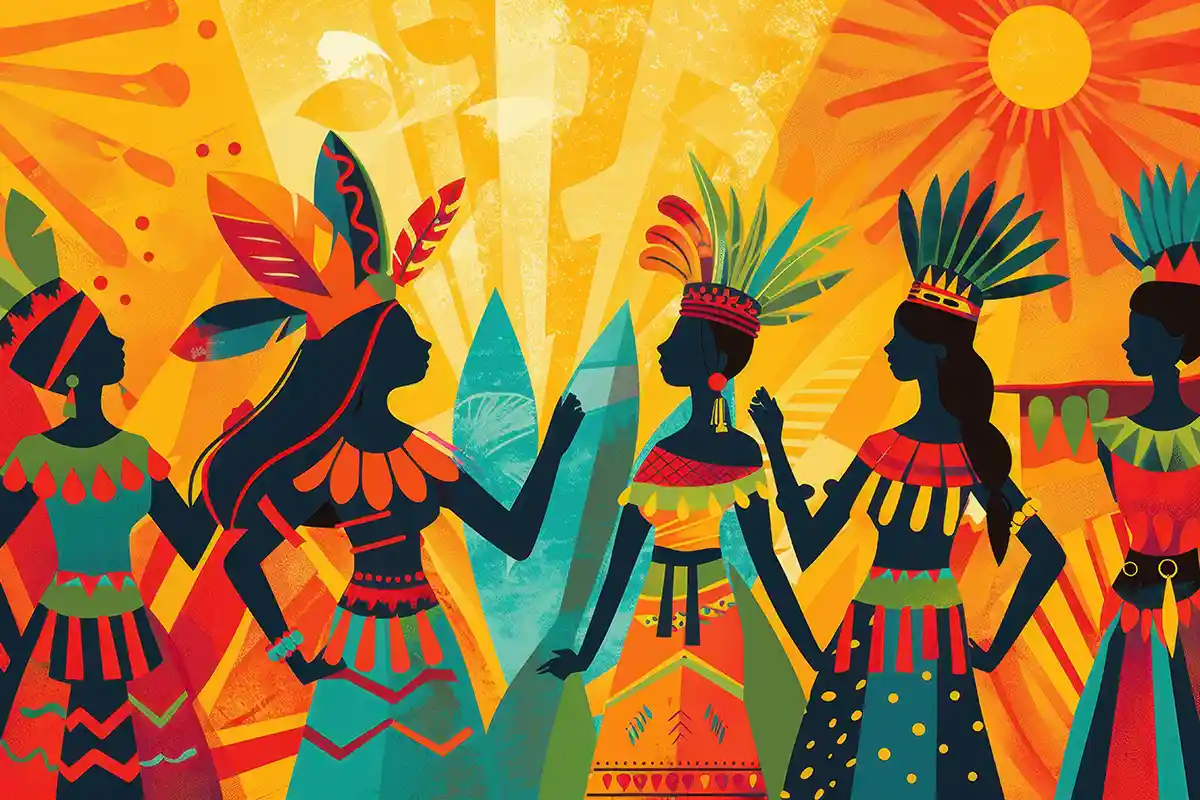Signature Collections: Land Back and Reclamation
Land as the First Classroom: How Language and Ecology Are One
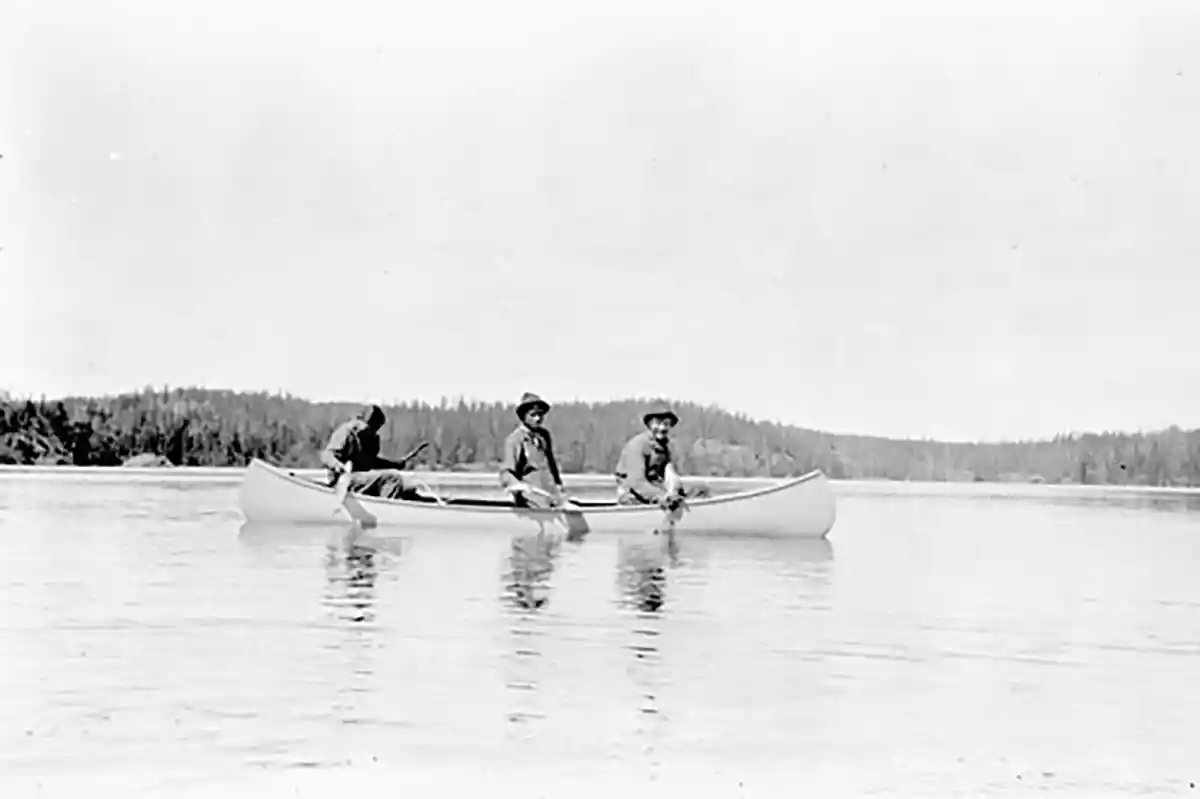
Historic photo of First Nations individuals canoe fishing, circa 1900
April 8, 2025
Land as the First Classroom: How Language and Ecology Are One (Land Back - Part 3 of 4)
For Indigenous communities, the land has always been the first classroom. It teaches survival, culture, and language all at once. From the names of plants to the behavior of animals, every lesson is rooted in the environment. Indigenous languages encode deep ecological knowledge, reflecting the interconnectedness of people and place.
Introduction: The Land Teaches
When access to traditional lands is lost, taken, something else is lost too—language. Words tied to the land, to hunting, fishing, and ceremonies, fade from daily use. The teachings of Elders, once passed on in real-world settings, struggle to survive in disconnected classrooms.
That’s why land-based learning is crucial to language revitalization. It’s not just about memorizing words, it’s about living the language, speaking it while engaging in the traditional practices that shaped it. Two powerful examples of this can be found in the Gwich’in Nation’s relationship with caribou and the W̱SÁNEĆ Nation’s revival of reef net fishing.
The Gwich’in Nation: Learning Language Through Caribou
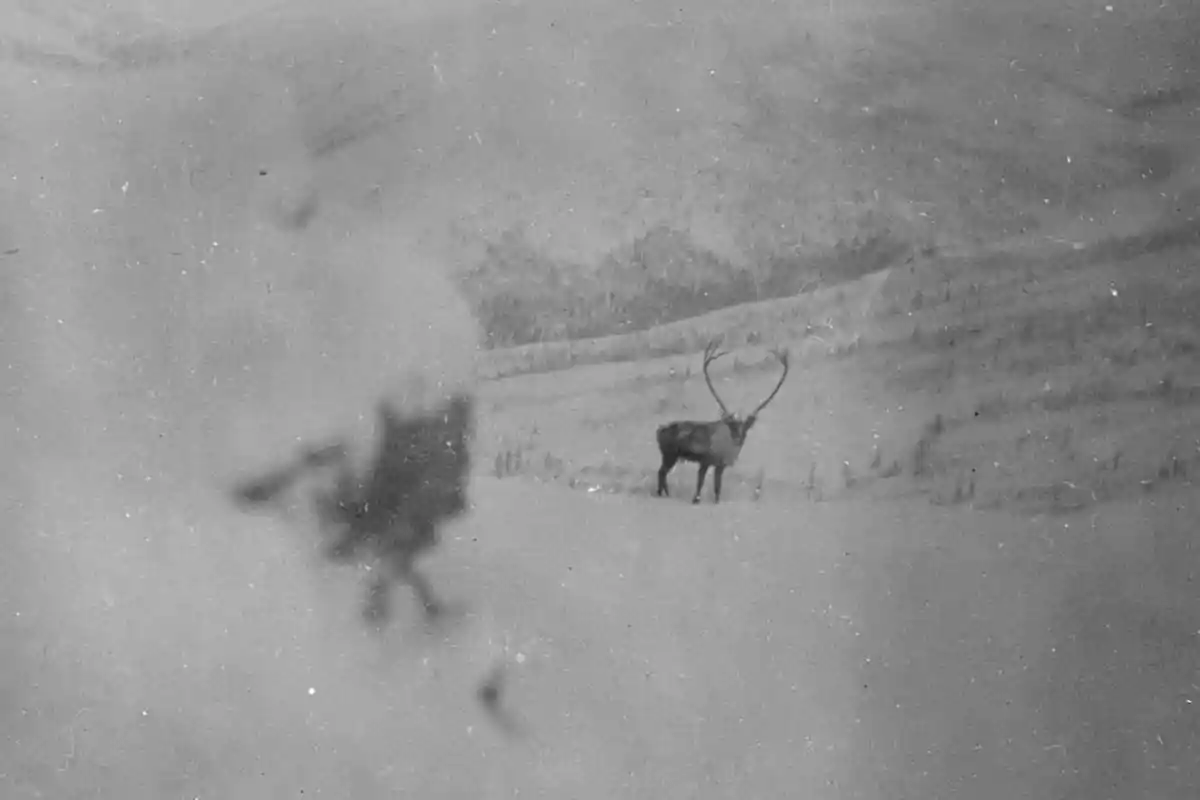
Image of a caribou, taken during the Klondike Gold Rush, Photographer: Woodside, H.J., 1858-1929
The Caribou People
For the Gwich’in people of Alaska and northern Canada, caribou are more than a source of food, they are central to survival, culture, and language. The Porcupine caribou herd has sustained the Gwich’in for thousands of years, shaping their way of life. But beyond sustenance, the Gwich’in language itself reflects their deep connection to the caribou.
Gwich’in language has over 100 words related to caribou anatomy, behavior, and tracking, a testament to generations of careful observation and traditional knowledge. These words don’t just describe the caribou; they tell a story of migration patterns, environmental changes, and spiritual relationships.
A lesson on the Land
Imagine a young Gwich’in child accompanying their Elders on a hunting trip. The tundra stretches endlessly in front of them, crisp air filling their lungs. As they walk, their elder bends down to examine hoofprints in the snow.
"Nakhw’įį" (hoof prints), an elder says, tracing the shape with their hand. "Nanh" (bull caribou), another elder notes, pointing to the size and direction of the tracks.
As they continue, they reach a frozen river. The child sees deep indentations in the ice, signs of a herd crossing recently.
"Łuk daghal" (they passed recently), the guide explains.
Later, when a caribou is harvested, the lesson continues. Every part of the animal has a name, a use, a meaning. The child learns words not from a textbook but from their own experience, while elders teach them how to show gratitude, share with the community, and honor the spirit of the caribou.
The Threats to Language and Land
This way of life is under threat. Climate change and industrial development are causing caribou populations to decline. Less access to caribou means fewer opportunities for young Gwich’in to learn the language in its natural context. The loss of land directly threatens the survival of both culture and language.
For the Gwich’in, protecting the Porcupine caribou herd isn’t just an environmental issue, it’s a language and cultural survival issue.
Land loss = language loss. Reclaiming land supports language revitalization.
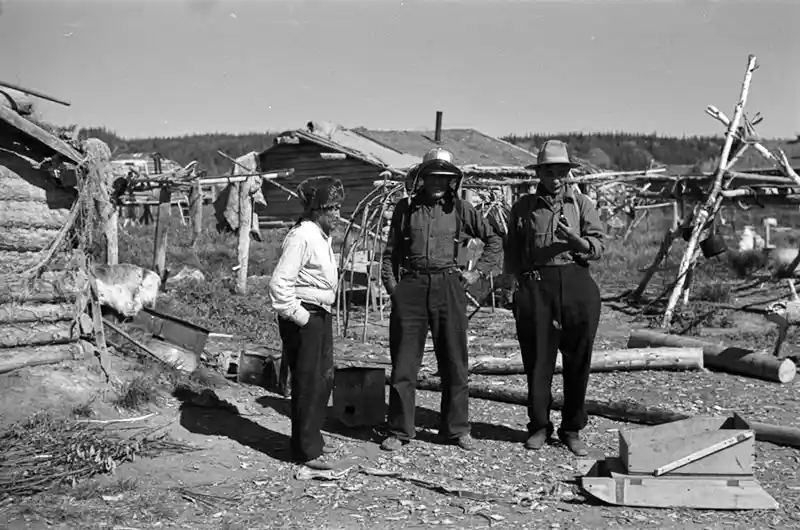
Three Gwitch'in Men, ca 1937, photographer, Keefer
The W̱SÁNEĆ Nation: Reviving Reef Net Fishing and Language
Ancestral Fishing Practices
For the W̱SÁNEĆ people of British Columbia, the ocean is just as important as the land. Central to their identity is the practice of SX̱OLE, or reef net fishing, an ancient method taught by the salmon spirit in W̱SÁNEĆ teachings.
This technique involves suspending a net between two canoes to guide migrating salmon into a carefully placed opening. It is more than just a way to catch fish, it is a communal practice tied to ceremony, governance, and language.
Colonial Disruption
In the early 20th century, the Canadian government outlawed reef net fishing, deeming it a “trap” and forcing the W̱SÁNEĆ people to abandon the practice.
With this ban, something deeper was taken away—the words, stories, and teachings tied to SX̱OLE. The practice of reef net fishing had its own vocabulary in the SENĆOŦEN language, and without it, many of these words fell out of use.
A Resilient Revival
Determined to reclaim their heritage, the W̱SÁNEĆ Nation revived reef net fishing for the first time in over a century in 2014. This was more than a symbolic act—it was a cultural and linguistic resurgence.
In 2020, the W̱SÁNEĆ Leadership Council launched the Youth Reef Net Program, a hands-on initiative where elders teach young people how to construct and use a reef net, all while speaking SENĆOŦEN.
The Youth's Journey
That summer, 13 young W̱SÁNEĆ people, aged 17 to 26, worked together to rebuild and set a traditional reef net. Over seven weeks, they researched historical methods, sourced natural materials, and listened to elders share their knowledge.
The experience was challenging—during their first attempt, the net became tangled, and they missed the opportunity to catch fish. But rather than seeing it as a failure, the youth embraced it as part of the learning process.
As one participant put it, “Even though we didn’t catch a fish, we caught knowledge.”
Language and Cultural Reclamation
Reef net fishing isn’t just about catching salmon, it’s about reclaiming language. The youth involved in the program had to speak SENĆOŦEN while working on the net, using words that hadn’t been spoken regularly in generations.
By bringing back the practice, they are bringing back the language.
Traditional knowledge holds the key to language revitalization. When Indigenous practices are revived, the language revives with them.
Final Thoughts: Land and Language—An Inseparable Bond
The stories of the Gwich’in and W̱SÁNEĆ Nations reveal a simple but powerful truth: Indigenous languages thrive when spoken on the lands and waters that gave birth to them.
Efforts to reclaim land, protect ecosystems, and restore traditional ways of life aren’t just environmental issues, they are language issues, too.
When Indigenous people return to their lands, they return to their languages.
🚀 Next in the series: "Building the Future: Indigenous-Led Land Back Success Stories."
📚 References
-
First Nations History
Land, Language, and Culture: Historical Contexts for Indigenous Reclamation.
FirstNationsHistory.ca.
https://firstnationshistory.ca -
Gwich’in Social and Cultural Institute
Traditional Knowledge and Caribou Ecology in the Gwich’in Settlement Area.
Katz, S.L., 2010.
https://gwichin.ca/sites/default/files/gsci_katz_2010_final_caribou_ecology_report_2010.pdf -
Canadian Association of Second Language Teachers (CASLT)
Discovering Languages: Gwich’in and the Power of Place-Based Learning.
CASLT Blog.
https://www.caslt.org/en/blog-discovering-languages-gwichin/ -
The Discourse
W̱SÁNEĆ Youth Rise to the Challenge of Reef Net Fishing as They Reclaim the Formerly Outlawed Practice.
The Discourse, Vancouver Island.
https://thediscourse.ca/vancouver-island/w%CC%B1sanec-youth-rise-to-the-challenge-of-reef-net-fishing-as-they-reclaim-the-formerly-outlawed-practice
Connect With Us
Follow our journey, share your thoughts, and participate in the conversation. Let's keep languages vibrant together.
Languages 4™ is more than a tool; it's a partner in the mission of preserving and revitalizing Indigenous languages. We invite you to reach out to us and explore how our platform can support your language teaching goals. [Join the Conversation 📩 Subscribe to our Newsletter ] and take a step towards sustaining the rich heritage of Indigenous languages.
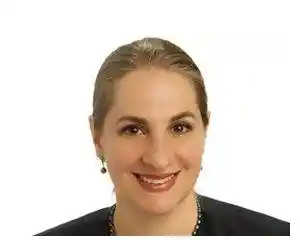
Lorelei O'Hagan
Director of Community Outreach, Languages 4
Ready to embark on this transformative linguistic journey? Dive in and experience the confluence of tradition and innovation as we reimagine the future of Indigenous language learning.
[Join the Conversation 📩 Subscribe to our Newsletter ]
